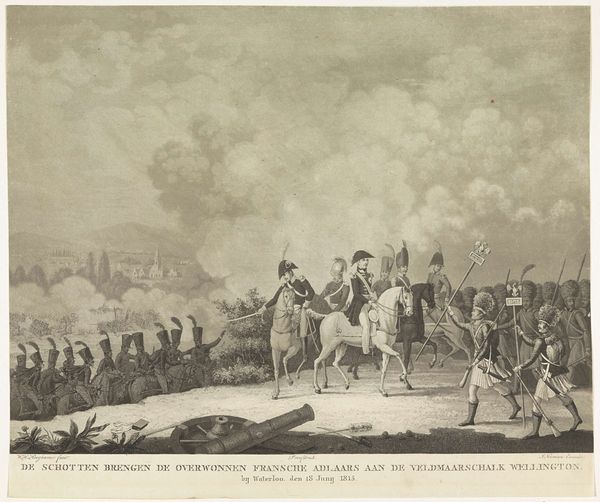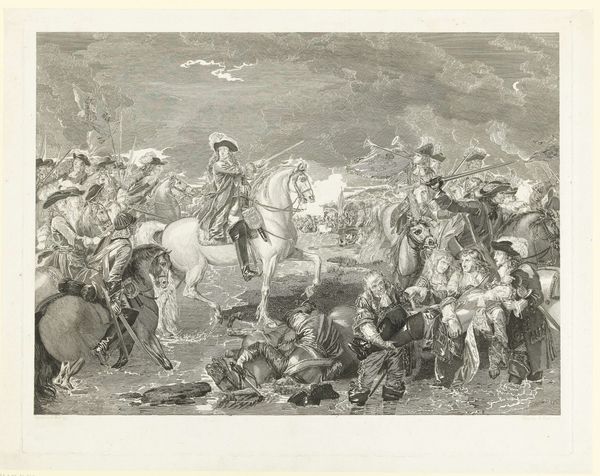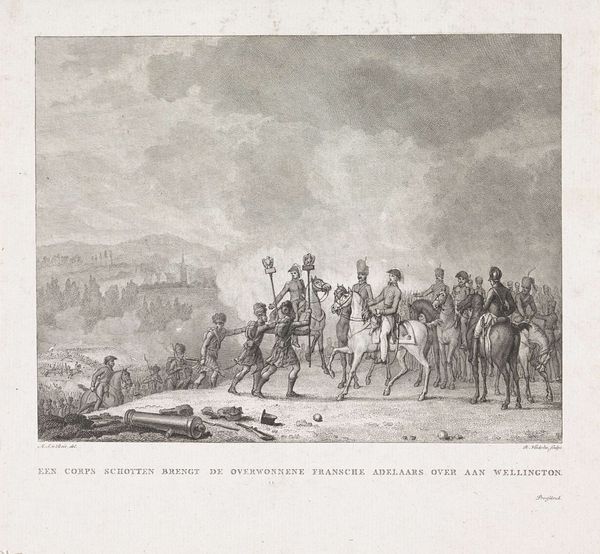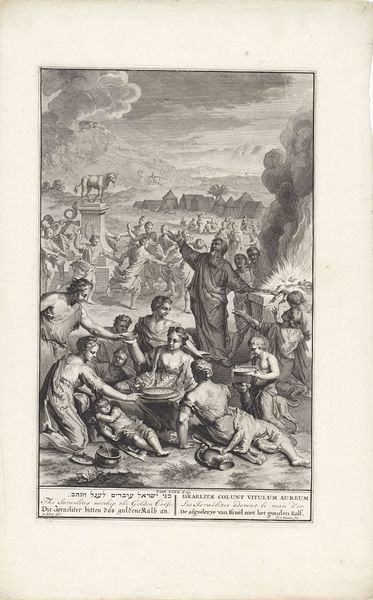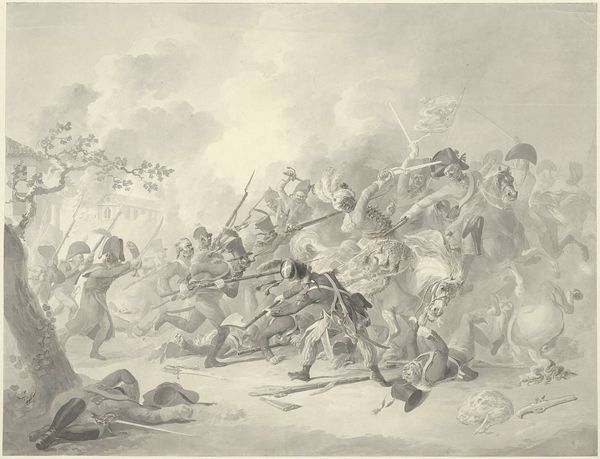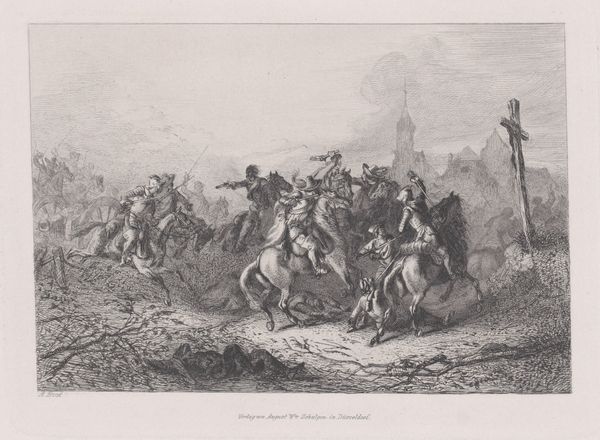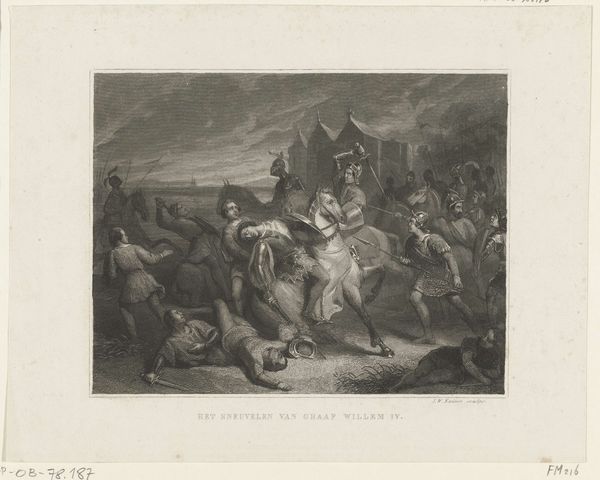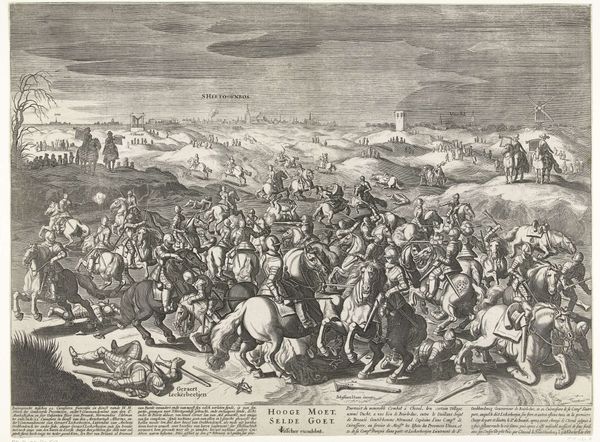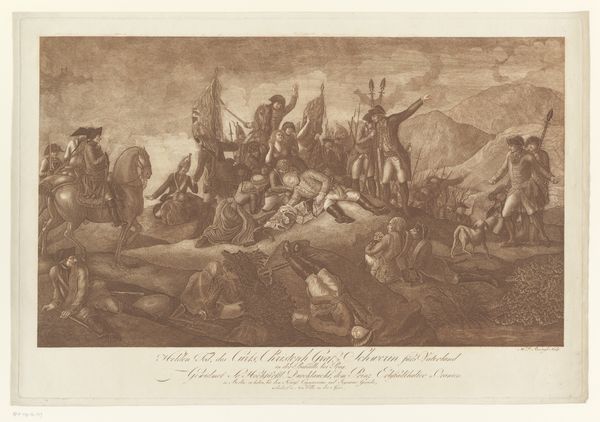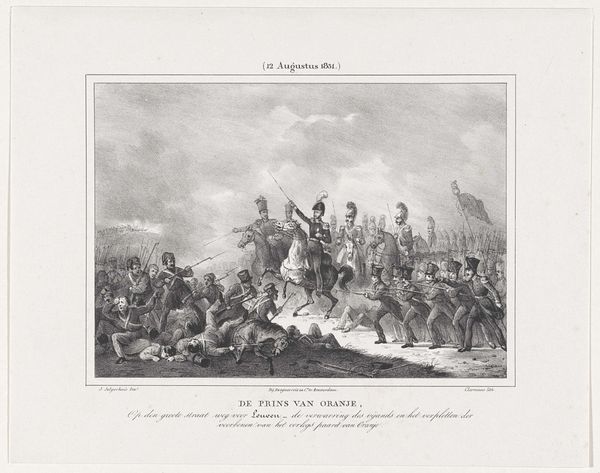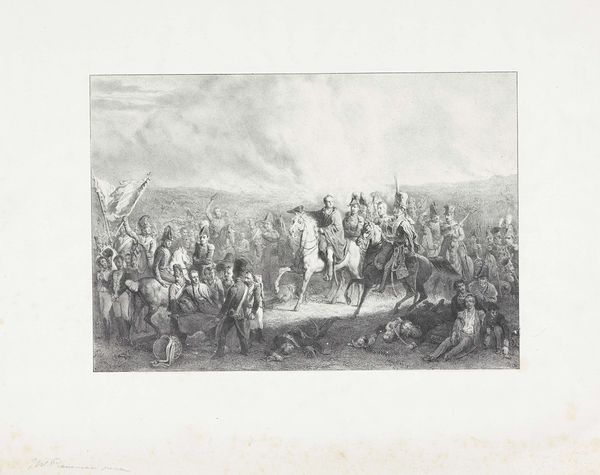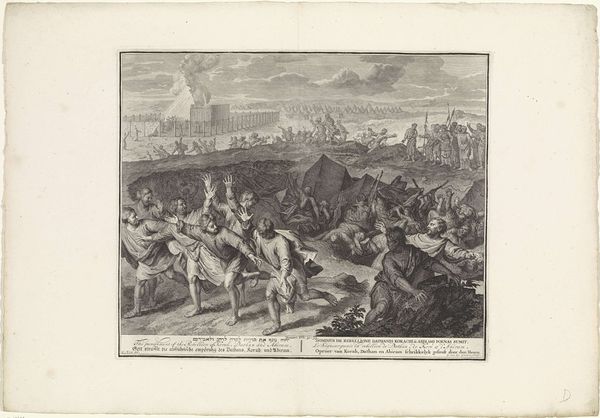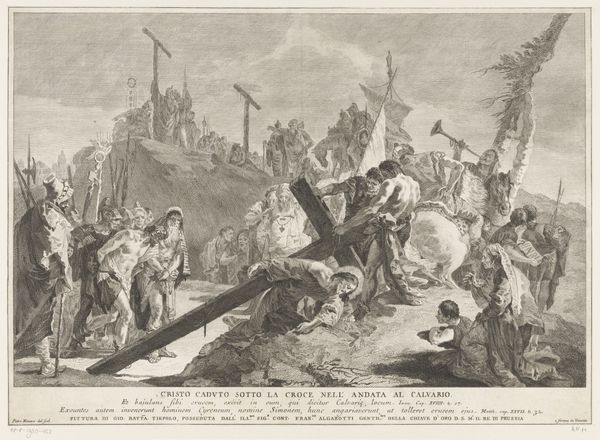
Kroonprins Willem Frederik George raakt gewond in de Slag bij Waterloo, 1815 1815
0:00
0:00
willemhendrikhoogkamer
Rijksmuseum
print, engraving
#
narrative-art
# print
#
landscape
#
figuration
#
romanticism
#
history-painting
#
engraving
Dimensions: height 361 mm, width 431 mm
Copyright: Rijks Museum: Open Domain
Curator: Here we have "Kroonprins Willem Frederik George raakt gewond in de Slag bij Waterloo, 1815" which translates to "Crown Prince Willem Frederik George Wounded at the Battle of Waterloo, 1815". It's an engraving dating to 1815, by Willem Hendrik Hoogkamer, residing here in the Rijksmuseum. My eye is immediately drawn to how it portrays the narrative. Editor: Ah, the fog of war, quite literally! What strikes me first is this overwhelming sense of grayness. The whole scene is almost spectral, bodies strewn on the ground, a strange calm amidst implied chaos. What’s with the pallor? Curator: It’s an engraving, so we need to consider the material limitations. Hoogkamer's masterful use of line and shadow creates depth using those constraints, even when trying to depict the scope and violence of Waterloo, however. Notice the dense ranks of soldiers in the background, a stark contrast to the intimate suffering in the foreground. This print was intended for a wider audience, allowing consumption and dissemination beyond a wealthy class, think about that. Editor: Intimate suffering is right! There’s the poor prince himself, looking rather uncomfortable on his horse. He's become an almost absurd figure, front and center amidst this devastation. Almost unintentionally comical, really! Curator: Perhaps the romanticism plays a key role. The portrayal of a prince suffering heroically, blending with the backdrop of war to incite pride, or maybe even question authority given its consequences, and depending on who consumes the image, of course. Editor: That’s it. It makes one wonder, what exactly was Hoogkamer trying to say with this work. Was it really about national pride, or about something far more unsettling? Look closer and you almost feel the grit and smell the gunpowder. Even if you don't look too close, I guess. Curator: It speaks to the fascinating capacity of even seemingly straightforward historical art. An accessible medium portraying history became something very personal through both consumption, but through process of making too. Editor: True. It's a compelling dance between what's depicted, and how it's brought to life. An interpretation layered into another interpretation... the echoes of which reverberate long after the battle itself is over.
Comments
No comments
Be the first to comment and join the conversation on the ultimate creative platform.
